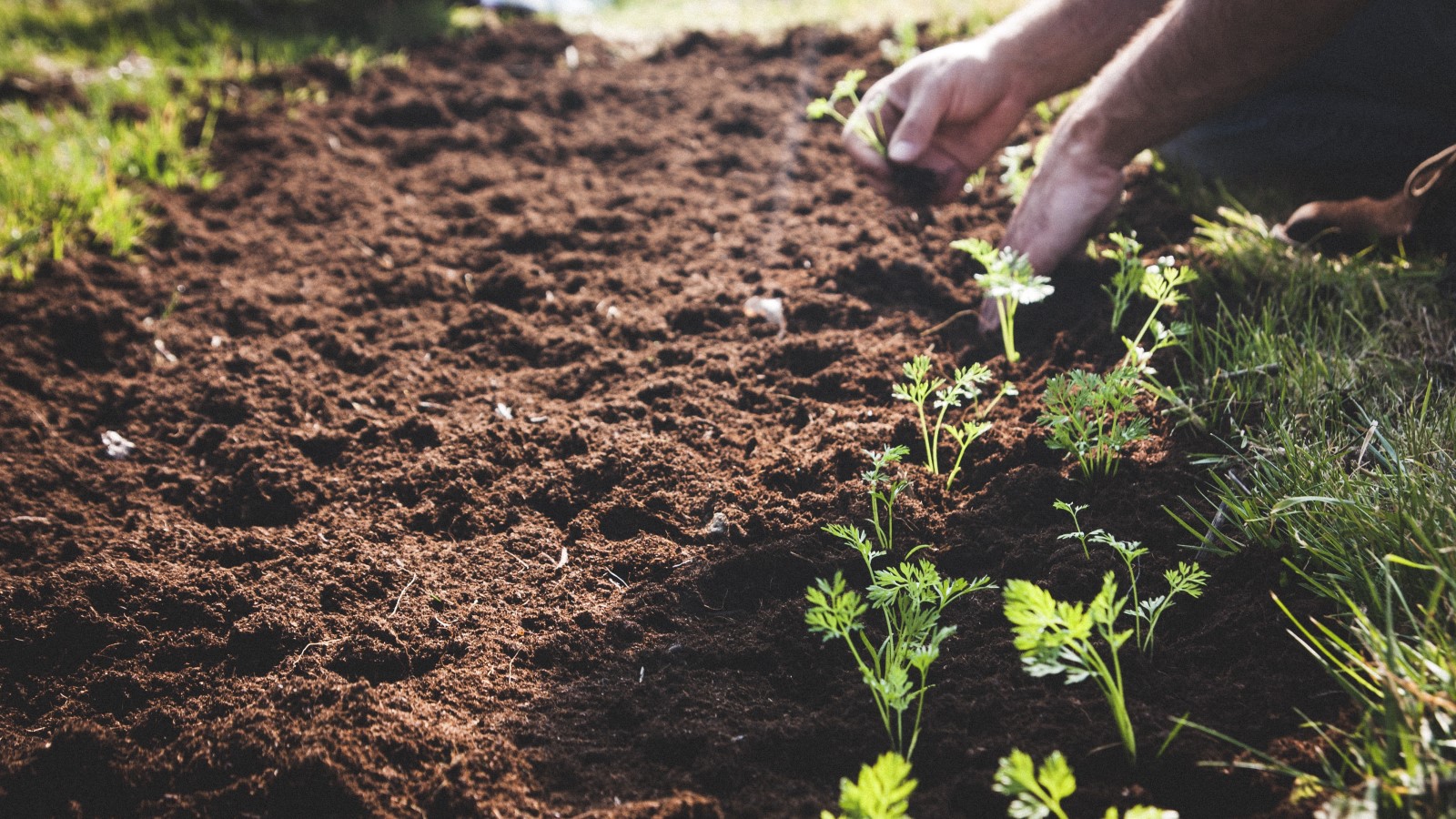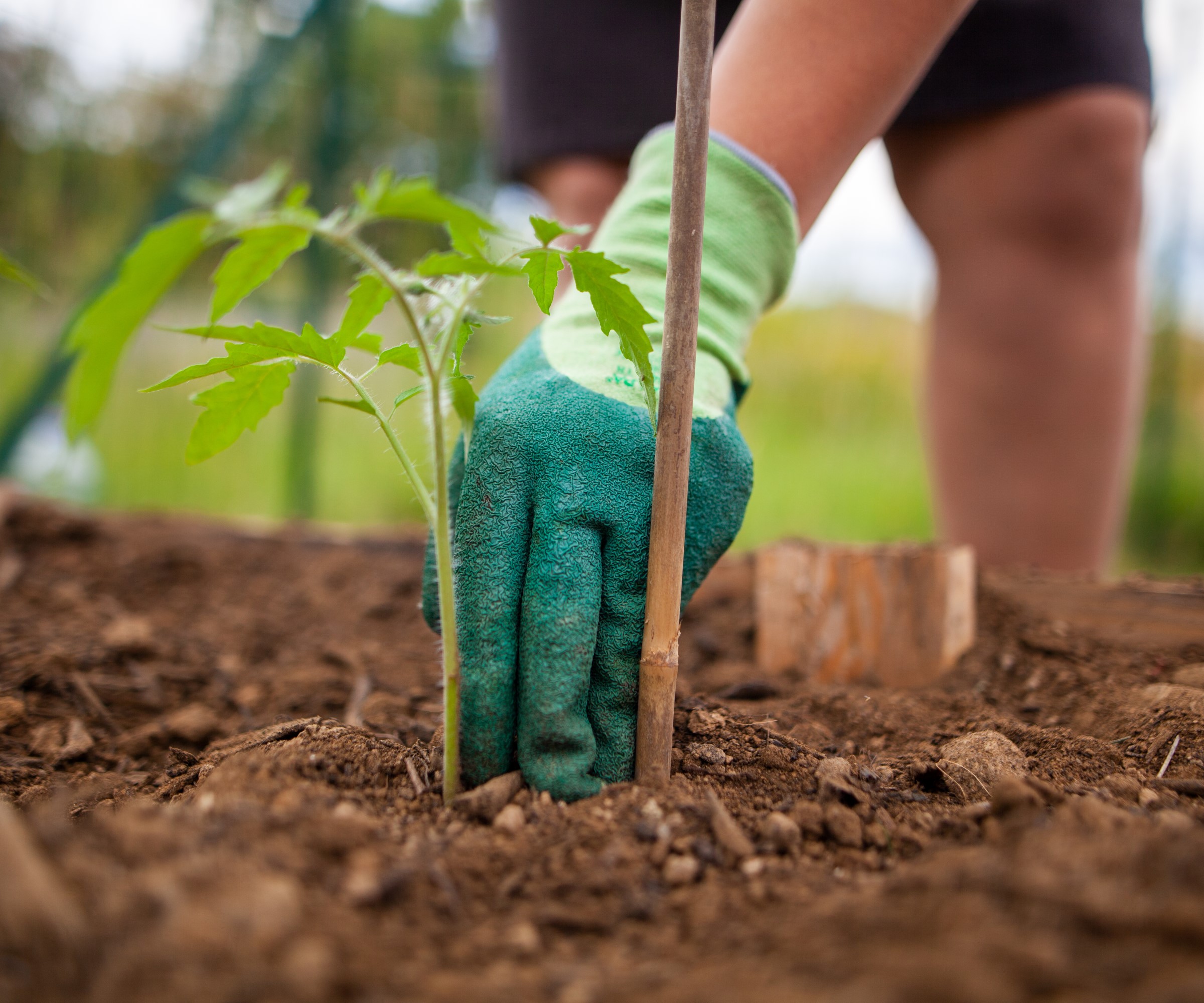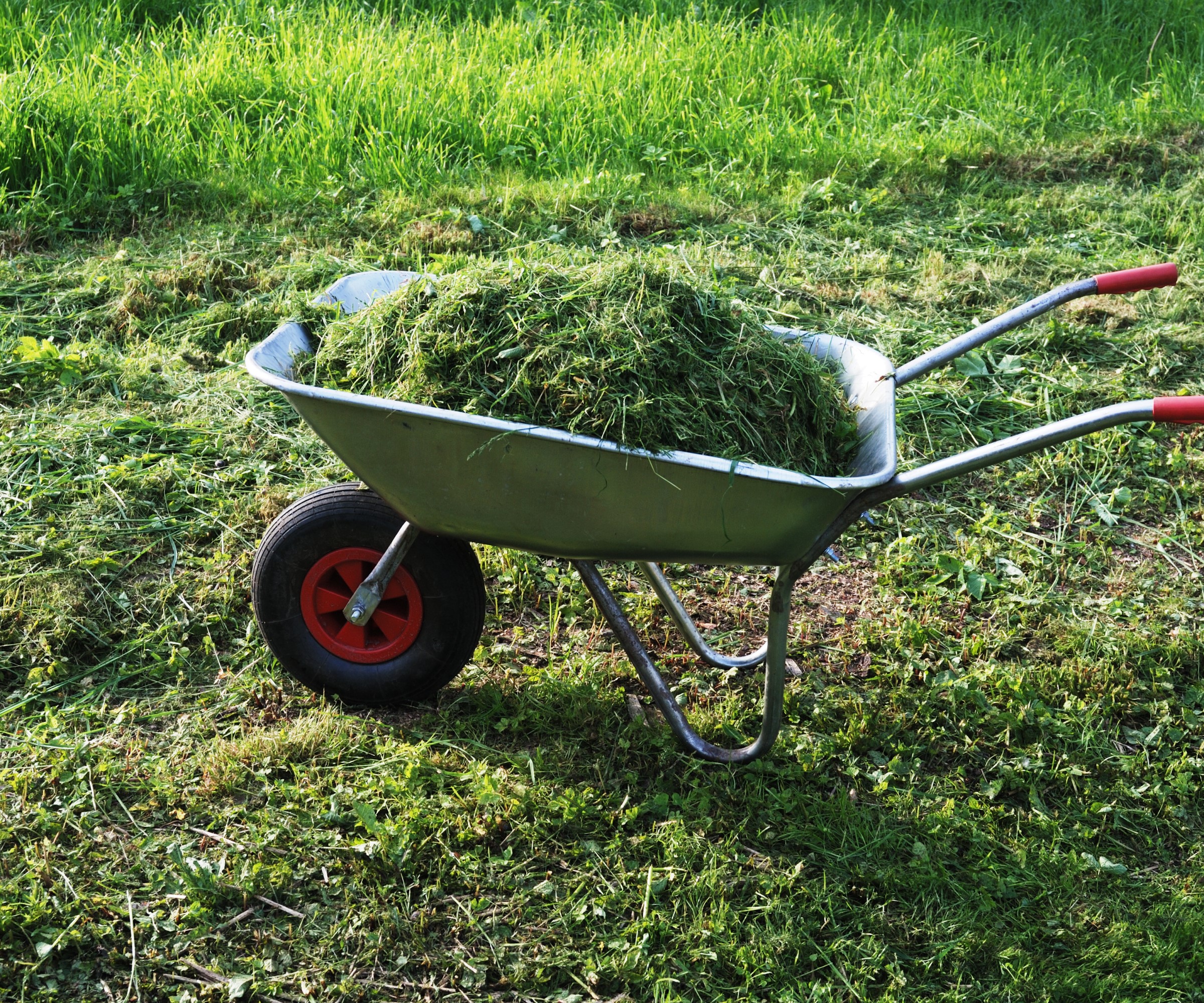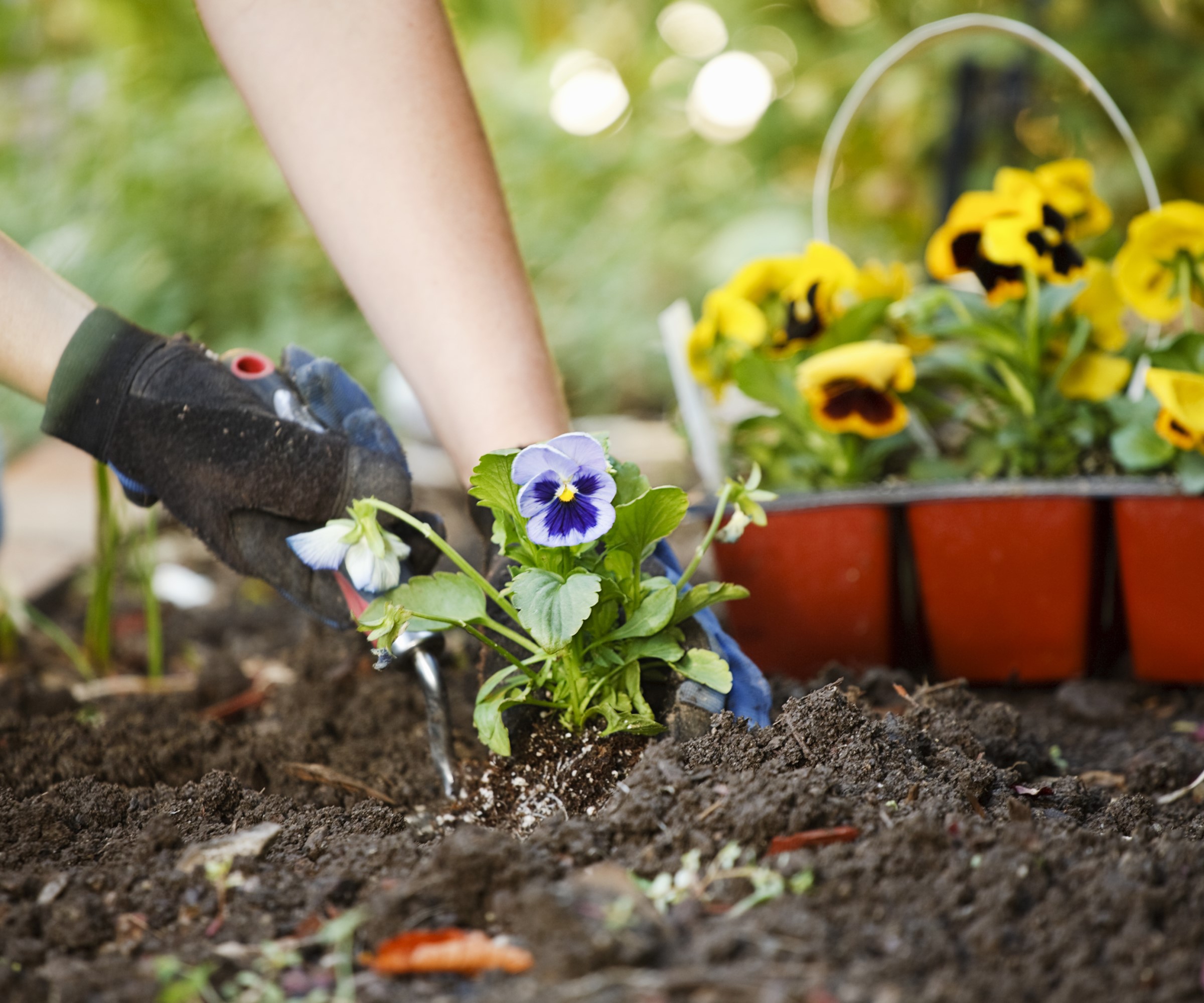Lasagna gardening – an expert guide to this no-dig method for compost-rich beds
Lasagna gardening can repurpose both garden and kitchen waste to create a growing environment your plants will love


A lasagne garden is an easy-to-do organic gardening approach that involves building new beds through the simple layering of everyday materials.
Lasagna gardening is a method of no dig gardening that utilizes stuff that may otherwise be seen as waste and turns them into nutrient-rich soil to grow a wide range of plants. The beds can smother weeds and be built directly on top of grass.
Using the likes of garden waste, grass cuttings, kitchen scraps, and newspaper it is possible to create an incredible and rich garden bed in as little as six months. If you cannot wait that long though, the addition of a layer of compost on top of the lasagna bed means you can plant straight away.

Fruit and vegetables are ideal for lasagna beds

Drew is a former professional gardener who has worked in historic gardens for the National Trust in the UK and also as a specialist grower in kitchen gardens, growing vegetables and fruit for chefs. He has also had an allotment which was maintained using no-dig methods.
What is lasagna gardening?
Lasagna gardening is also called sheet composting and it involves stacking a range of compostable material in layers. Over time, these layers will decompose and develop into a very nutrient-rich soil that is ideal for a wide range of plants. Lasagna gardening beds can be started on open ground, even sitting directly on top of grass or very weedy areas of the backyard, and sit above the ground. Alternatively, it can be a successful method to fill a frame if you are thinking of raised bed garden ideas for low-maintenance planters.
Why should I try the lasagna gardening method?
There is a range of benefits that lasagna gardens can offer. The main one is that it is a method that saves waste and makes use of materials that may otherwise be sent off to landfills. It makes it an environmentally-friendly method of gardening as the likes of cardboard, newspapers, grass clippings, garden waste, kitchen scraps, and more can all be used to make lasagna beds.
Allison Vallin Kostovick, organic gardener and the creator of Finch + Folly, adds that no tools are required to create these ‘incredible, rich garden beds’ that are a ‘win-win’ as they repurpose lots of waste.
‘These no-till gardens, also known as sheet mulching, are wonderful because they are built on items you’re probably looking to get rid of, like broken branches, dried leaves and kitchen waste,’ she adds.
Design expertise in your inbox – from inspiring decorating ideas and beautiful celebrity homes to practical gardening advice and shopping round-ups.
‘Because these beds are built on a foundation that focuses on carbon and nitrogen creation, you’re essentially creating self-sustaining compost-rich beds that will enrich your soil as they gradually break down. These beds also tend to be fairly drought-friendly as they hold and retain water and slowly leech it out into the soil over the season.’
Lasagna beds are also likely to experience fewer weeds, thanks to the layers of cardboard and other suppressing material, and require less fertilizer to be added as the soil made by the decomposing materials will be rich in nutrients needed by plants. No dig and lasagna beds are full of nutrient-rich compost that offers essential nutrients in the form of nitrogen, phosphorus and potassium – seen as NPK on plant fertilizer labels – that are released slowly to the plants.

Grass clippings are a 'green' ingredient for lasagna beds

Allison Vallin Kostovick is a long-time organic gardener with over 25 years of experience and the author of 'The Garden Maker's Book of Wonder', due to be published in August 2023 by Storey Publishing. She is also the creator of Finch + Folly, an educational website filled with advice and articles for gardeners. Over three-quarters of her garden has been built via lasagna methods.
Materials for a lasagna garden
The method for how to make a lasagna garden bed is very simple and can be done in just a few steps. You do need a lot of materials to make up the different layers of the bed, though, thankfully many of these can be found around the home or backyard.
You firstly need cardboard or newspaper to create the base of the lasagna bed and that will form the layer that supresses the grass or weeds beneath it. On top of that you will need to source twigs or branches that can be piled on top of the cardboard, enough to form a layer a few inches thick. After that, it is then the case of using both 'green' and 'brown' ingredients to layer up the bed.
'Brown' ingredients can include the likes of dried leaves, shredded newspaper, wood ash, pine needles or straw, while the 'green' layers can be made up of grass clippings, kitchen scraps, or garden waste. Ideally you want large quantities of each of these, as each layer need to be 3-5 inches deep and you need enough for three 'brown' layers and two layers made up of 'green' material.
When building the beds, take care not to source and use any garden material that may have seeds in them, as the bed will not generate heat like composting to kill the seeds and they will likely sprout.

Cardboard forms the base of a lasagna bed and can be laid straight on top of a lawn
What are the best plants for a lasagna garden bed?
The soil as a result from the decomposing materials in the bed will be nutrient-rich and suitable for a wide range of plants. As with any no-dig gardening method, the combination of carbon-rich and nitrogen-rich materials that go into making the bed creates a rich soil full of humus that is full of nutrients and slowly releases these to the plants over an extended period of time. That makes lasagna gardening perfect for growing practically any plant, including any of the ideal no dig garden plants perfectly suited to the growing method.
Allison Vallin Kostovick adds: ‘Once your bed has had a chance to break down and settle more, then you can plant anything you’d like. Once your bed is established, you can plant whatever to your heart’s content. I plant anything and everything in mine, from perennials to vegetables to huge and hulking sunflowers.’
Lasagna beds are ideal if you are looking for flower bed ideas or vegetable garden ideas and want to try something more environmentally friendly in your backyard.

Lasagna beds are ideal for any types of vegetables or flowers
Can you plant immediately in a lasagna garden?
Ideally, best practice is to wait usually between six months and a year before planting into a lasagna garden bed. This gives the bed the time to fully break down and allow the microbes in the decomposing materials to do their thing. The exact time the materials take to break down will depend on the types of materials used and in what ratio. A good sign the beds are ready is when you cannot identify any of the waste materials that went into making the beds. For example, leaves or kitchen waste added do not look like leaves or kitchen scraps and more like soil.
If you cannot wait that long and want to plant immediately into a lasagne garden, then there is a solution available. Top the beds with 10-14 inches of compost and you plant into them right away. Allison Vallin Kostovick says that, if you choose to plant straight away, then it is best to focus on ‘more shallow-rooted veggies like broccoli, kale, lettuce, onions, cabbage, spinach, herbs and annual flowers’.
A lasagne garden is an environmentally-friendly and hassle-free way to both use up waste materials and get nutrient-rich beds in which to grow any plants you want. While the main hurdle to this sustainable gardening idea could be getting enough material to be able to make the layers, sourcing from friends, neighbors, and family can help bolster your supplies and give you everything you need to create lasagna beds in your backyard.

Drew has worked as a writer since 2008 and was also a professional gardener for many years. As a trained horticulturist, he worked in prestigious historic gardens, including Hanbury Hall and the world-famous Hidcote Manor Garden. He also spent time as a specialist kitchen gardener at Soho Farmhouse and Netherby Hall, where he grew vegetables, fruit, herbs, and cut flowers for restaurants. Drew has written for numerous print and online publications and is an allotment holder and garden blogger. He is shortlisted for the Digital Gardening Writer of the Year at the 2025 Garden Media Guild Awards.